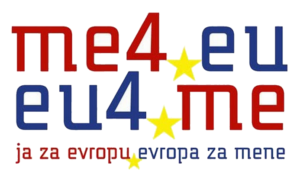Financial perspective of the IPA 2021-2027 (IPA III)
The new financial perspective of the IPA 2021-2027 (IPA III) is based on the lessons learned from the previous perspectives IPA 2007-2013 and IPA 2014-2020, with the aim of ensuring further, smooth realization of the defined goals and priorities, which are in line with the EU enlargement strategy and the line of commitment of the Western Balkan countries regarding future membership in the European Union.
The umbrella document for the implementation of IPA III is the Regulation on the establishment of the Instrument for Neighbourhood, Development and International Cooperation, which is accompanied by the following documents:
- Regulation on the establishment of IPA III
- Special rules for the implementation of IPA III
- IPA III programming framework
- When it comes to the legal framework of IPA III, on December 17, 2020, the Multi-year financial framework for the period 2021-2027 was agreed.
Key novelties in IPA III
In comparison to the practice from the previous perspectives of IPA I and IPA II, a significant novelty in IPA III is that there are no pre-defined amounts of financial support per country, but there is a single, common budget for all IPA beneficiary countries. The European Commission designed this approach in order to encourage faster and more efficient implementation of programs and projects, but also to provide the beneficiary countries with additional opportunities and a reward for good dynamics in implementing reforms, which is also in line with the revised methodology for accession to the European Union. At the same time, the European Commission takes into account the total fair distribution of funds between countries on a seven-year basis.
When it comes to support programming, although from the user’s perspective there will be no major changes in the process itself, the European Commission will try to ensure an approach that will be based on performance through IPA III, supporting states and institutions that have committed to a larger scope of reforms. The key criteria for receiving financial support will be the relevance (strategic importance) and maturity of the proposed projects, in accordance with the rules that apply in EU member states when using the European Structural and Investment Funds. This primarily refers to the adequate readiness of tender and project documentation, as well as legal and technical prerequisites, which largely depends on the type of project. This approach will mean that every year, at the level of the Western Balkans and Turkey, the European Commission will choose the projects that are best ranked according to the criteria of strategic importance and maturity. In practice, this will mean that countries with more prepared projects and a good strategic planning system will be able to use more funds compared to less prepared countries. The possibility of using additional funds for countries that progress faster in the negotiation process was also announced. The Office for European Integration, in cooperation with the line ministries, started the process of preparing a strategic response with the aim of planning the financial resources that will be available to Montenegro through the Pre-accession Assistance Instrument for the period 2021-2027 (IPA III).
The preparation of new IPA III programs for the period 2021-2027 will be based, in accordance with the Economic and Financial Plan for the Western Balkans, on the provision of financial support for five policy areas, namely:
- Rule of law, fundamental rights and democracy
- Good governance, alignment with the legal acquis, strategic communication and good neighbourly relations
- Green agenda and sustainable connectivity
- Competitiveness and inclusive growth
- Territorial and cross-border cooperation
Within each of the five areas, the following thematic priorities are defined:
- Rule of law, fundamental rights and democracy:
Thematic priority 1: Justice
Thematic priority 2: Fight against corruption
Thematic priority 3: Fight against organized crime / security
Thematic priority 4: Migration and border management
Thematic priority 5: Fundamental rights
Thematic priority 6: Democracy
Thematic priority 7: Civil society
- Good governance, alignment with the legal acquis, strategic communication and good neighbourly relations:
Thematic priority 1: Good governance
Thematic priority 2: Administrative capacities and harmonization of the acquis
Thematic priority 3: Good neighbourly relations and reconciliation
Thematic priority 4: Strategic communication, monitoring, evaluation and communication activities
- Green agenda and sustainable connectivity:
Thematic priority 1: Environment and climate change
Thematic priority 2: Transport, digital economy and society, and energy
Thematic priority 3: Competitiveness and inclusive growth
- Competitiveness and inclusive growth:
Thematic priority 1: Education, employment, social protection and inclusive policy, and health
Thematic priority 2: Private sector development, trade, research and innovation
Thematic priority 3: Agriculture and rural development
Thematic priority 4: Fisheries
- Territorial and cross-border cooperation:
Thematic priority 1: Encouraging employment, labour mobility and social and cultural cross-border inclusion
Thematic priority 2: Encouraging environmental protection and climate change adaptation and mitigation, prevention and risk management
Thematic priority 3: Encouraging sustainable traffic and improving public infrastructure
Thematic priority 4: Encouraging the digital economy and society, among other things, by implementing digital connectivity, developing e-Government services, digital trust and security, as well as digital skills and entrepreneurship
Thematic priority 5: Encouraging tourism and cultural and natural heritage
Thematic priority 6: Investing in youth, education and skills, among others, by developing and implementing comprehensive education, vocational training, training programs and infrastructure that supports joint youth activities
Thematic priority 7: Encouraging local and regional administration, improving planning capacity and administrative capacity of local and regional authorities
Thematic priority 8: Strengthening competitiveness, business environment and development of small and medium-sized enterprises, trade and investment, among other things, through the promotion and support of entrepreneurship, especially small and medium-sized enterprises, development of the local cross-border market and internationalization (TP8)
Thematic priority 9: Encouraging research, technological development, innovation and digital technologies
The operationalization of financial assistance is based on the signing of a Financial Agreement between the Commission and the IPA II beneficiary state on a one-year or multi-year level.

